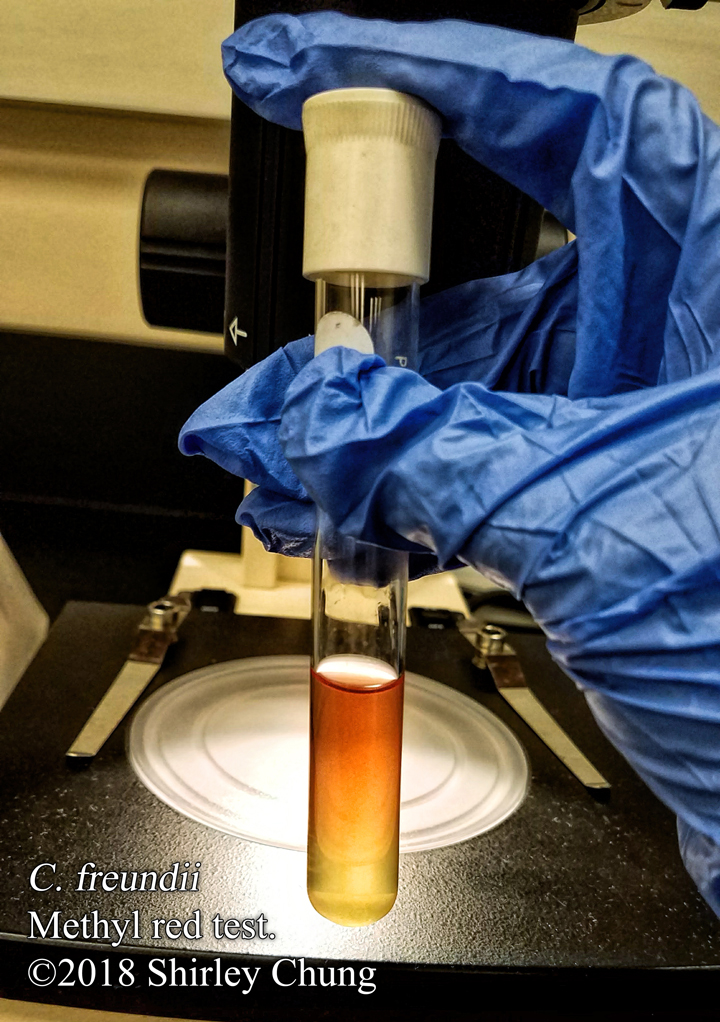Methyl Red Test (Cappuccino & Welsh, 2017).
Description. The Methyl Red test is used to see if organisms can ferment glucose and if the stabilized end-products are acidic (positive test if the methyl red indicator turns red in the inoculated medium) (Cappuccino & Welsh, 2017). The indicator turns yellow (negative) if the medium is more alkaline. It is part of the IMViC test series.
Clinical significance. The Methyl Red test is useful in differentiating between E. coli and E. aerogenes (Microbe Online, 2014).
Summary of main steps. It is assumed that the reader knows aseptic technique and basic inoculation.
- Using aseptic technique, inoculate a methyl red broth tube (MR-VP because it is the same medium used for the Voges-Proskauer test).
- Incubate at 37°C for 24-48 hours.
- Add 5 drops of methyl red indicator and gently agitate the tube. Wait a few minutes. Observe results.
Reference
Cappuccino, J. G., & Welsh, C. (2018). Microbiology: A laboratory manual.
Microbe Online. (2014, January 24). Methyl red (MR) test: Principle, procedure and results. Retrieved from https://microbeonline.com/methyl-red-mr-test-principle-procedure-results/

